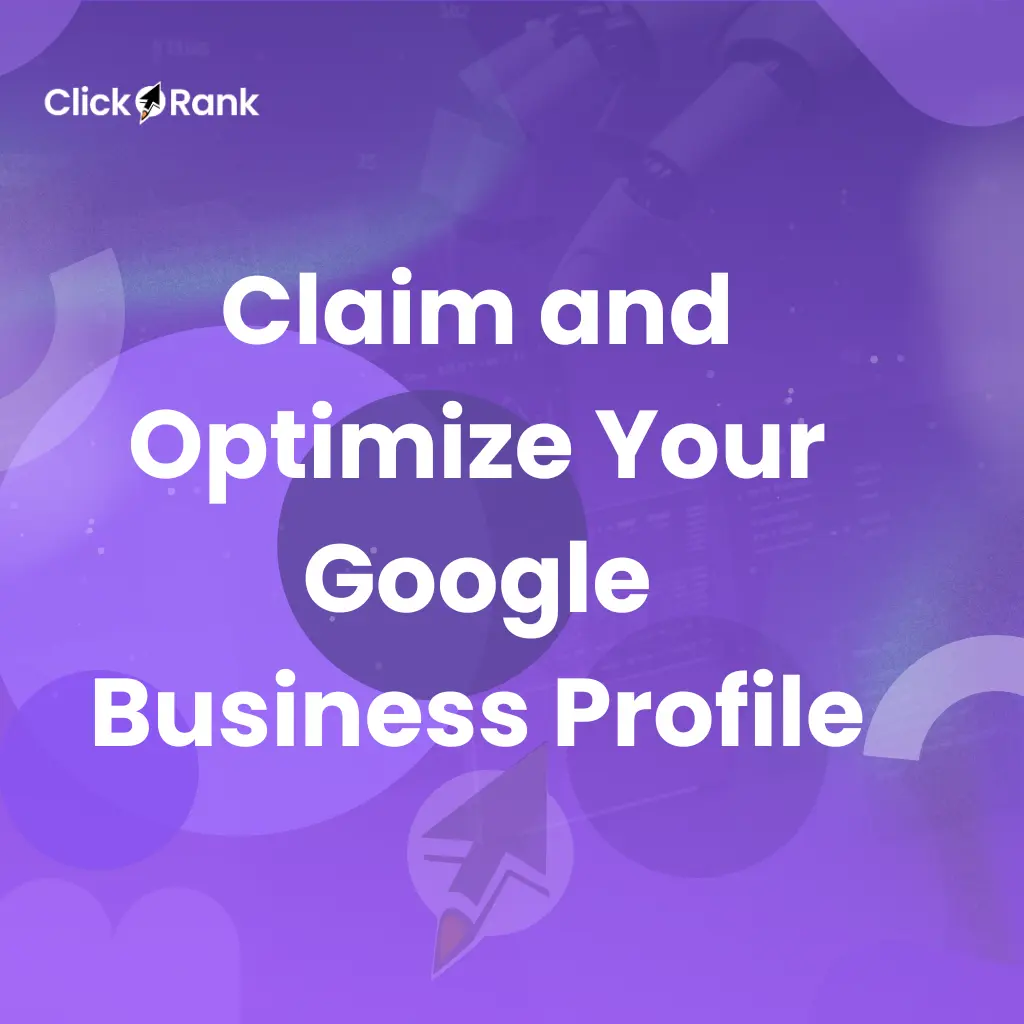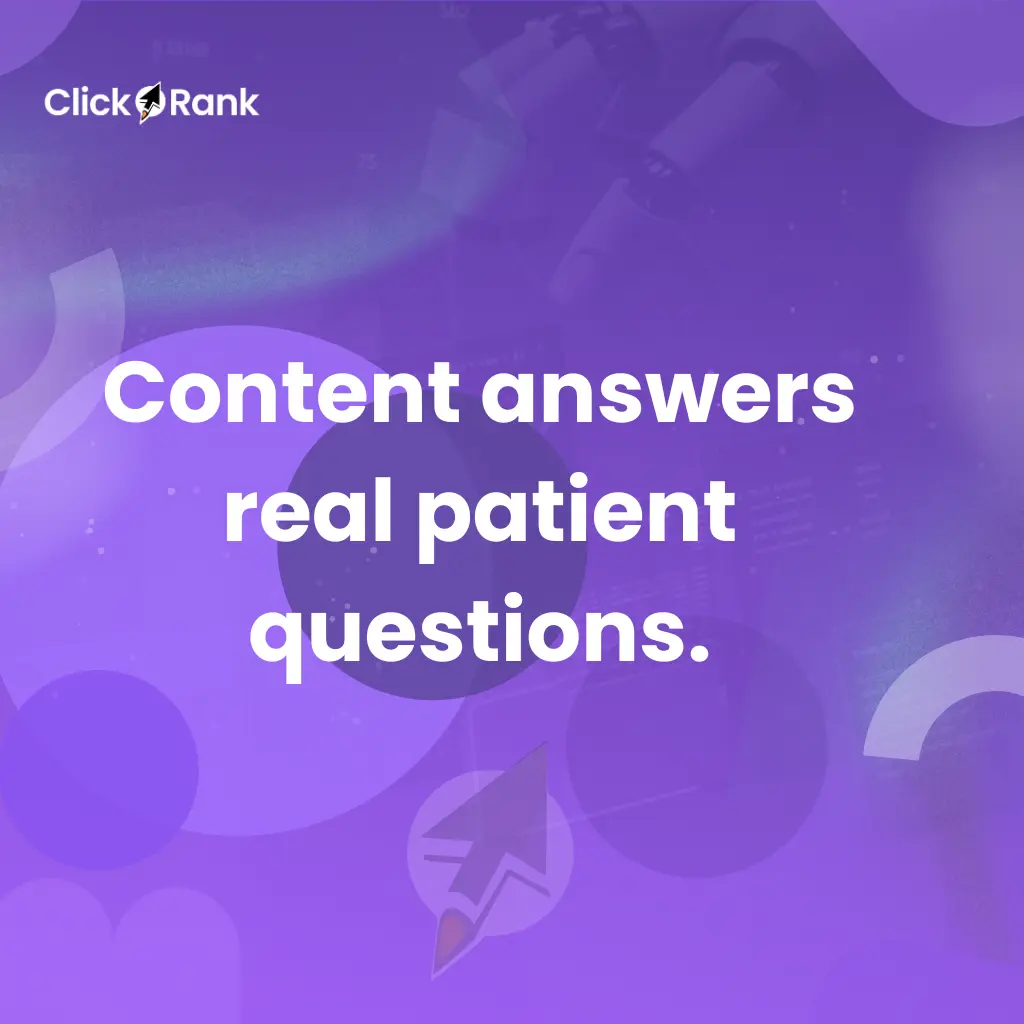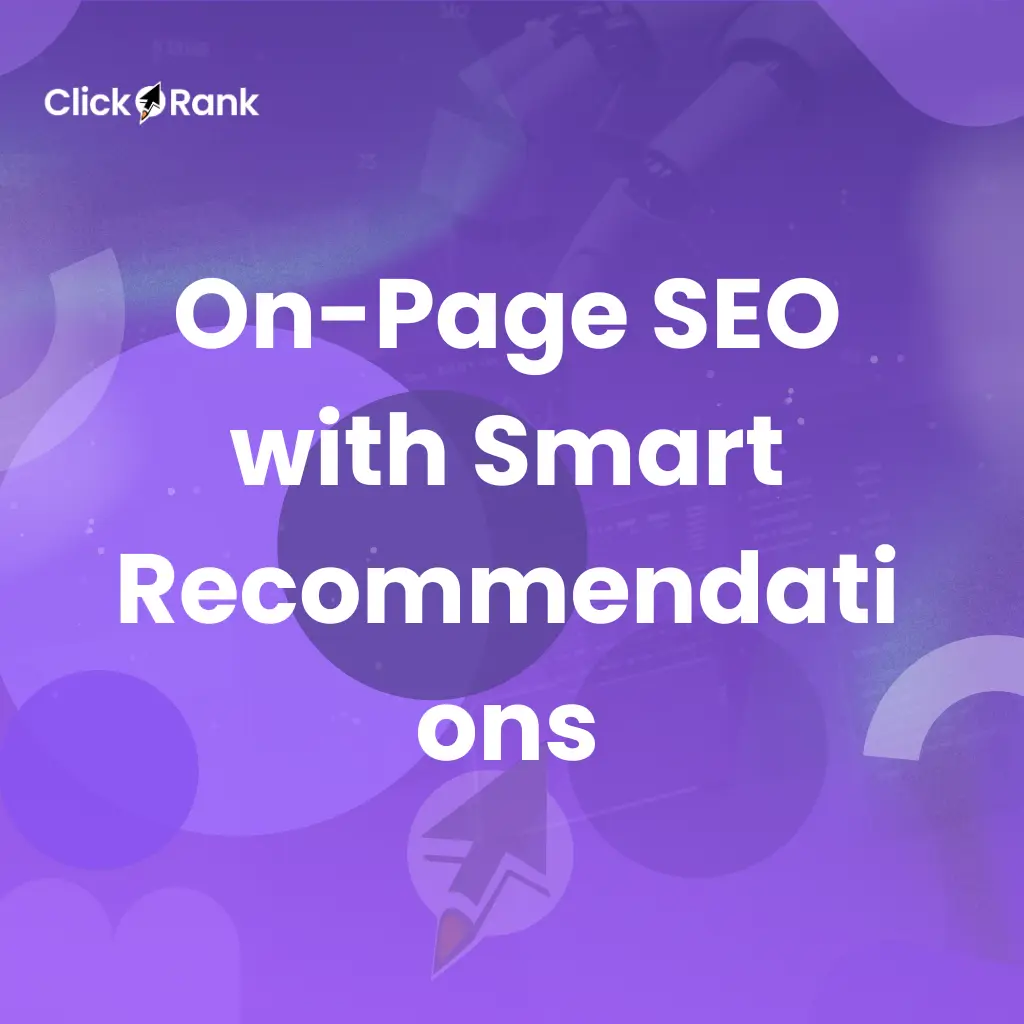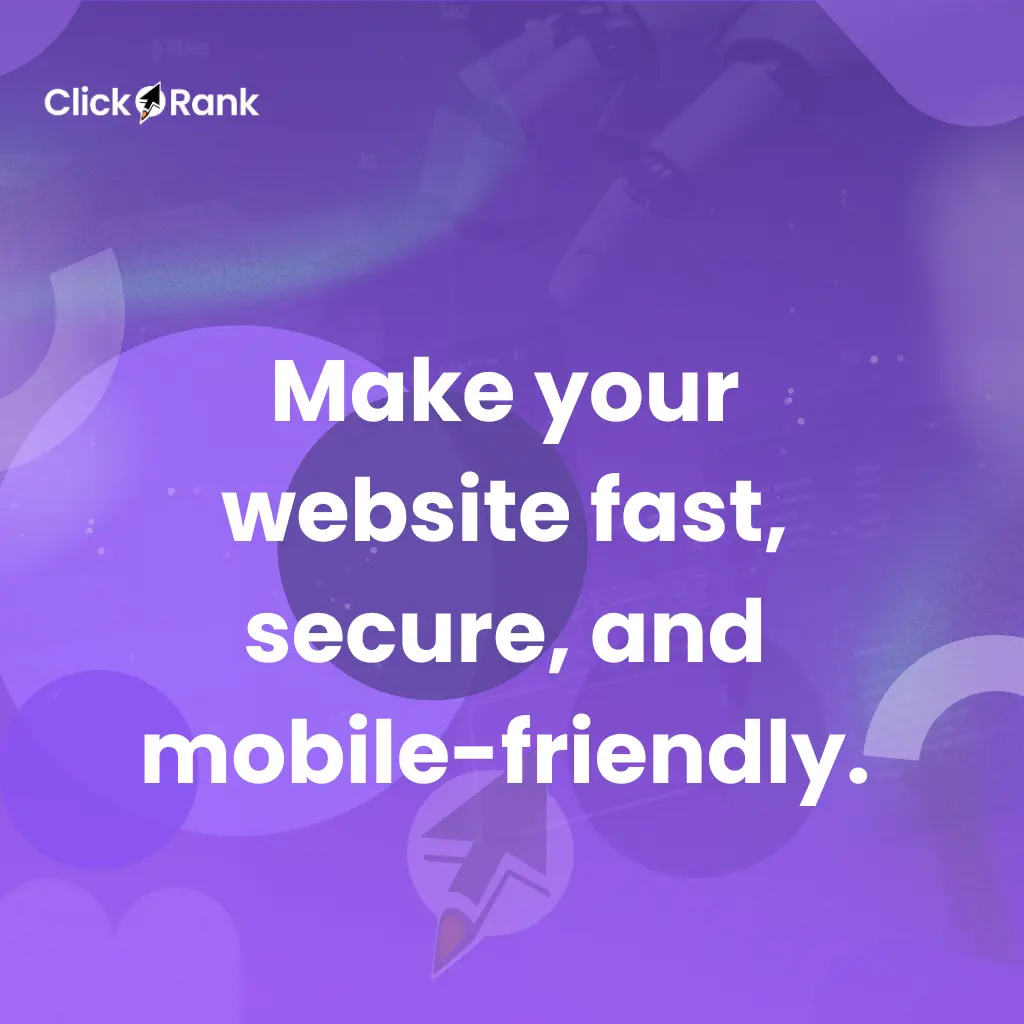SEO for Nutritionists: The Complete Guide to Attract More Clients Online
Many health professionals struggle online. They have great skills but not enough patients find them on Google. This guide shows how to fix that problem with SEO and how ClickRank can make the process easy with one-click solutions.
What is SEO in Healthcare?
Search Engine Optimization (SEO) helps websites appear higher in Search Engine Results Pages (SERP). For nutritionists and dietitians, it means reaching more people looking for meal plans, diet tips, and consultations.
Definition of SEO
SEO is about making your website friendly for search engines and people. It uses keywords, meta tags, and structured content so Googlebot can crawl and index your pages.
Purpose in Healthcare
In the healthcare field, SEO supports trust. It shows your expertise (E-A-T), which is important for YMYL topics. Patients search for reliable diet advice and healthy meal guides.
Why Nutritionists Need Online Presence
A website with optimized service pages, FAQs, and blog posts builds credibility. It helps in local pack results and increases patient engagement.
SEO in healthcare is not just about traffic. It’s about connecting patients with the right health professionals at the right stage of their journey.
Why SEO is Essential for Nutrition Professionals
Nutritionists who use SEO gain a competitive edge. They show up in near me searches, build stronger authority, and attract more organic traffic.
Attracting Local Clients
Local SEO with Google Maps and Google Business Profile helps you appear when people search “nutritionist near me.” Reviews and local schema markup improve trust.
Competing with Other Professionals
By optimizing on-page SEO and creating blog posts on topics like weight loss or diet plans, you can stand out against other dietitians.
Building Trust and Authority
earch engines use ranking factors like backlinks, domain authority, and social proof. Case studies and testimonials on service pages help your authority.
With better SEO, your services become more visible. That means more online booking, more patient engagement, and steady growth.
Key SEO Strategies for Nutritionists
To succeed online, health professionals need a balance of on-page, off-page, local, and technical SEO.
On-Page SEO
Use H1 tags, optimized title tags, and meta descriptions. Content optimization with long-tail keywords ensures patients find your answers.
Local SEO
Update your Google Business Profile, add correct address in sitemaps, and use schema markup for LocalBusiness.
Off-Page SEO and Technical Fixes
Backlinks from health sites, online reviews, and social media signals increase credibility. At the same time, technical SEO ensures fast site speed, HTTPS security, and mobile optimization.
Each part of SEO works together. When aligned, it builds a strong online visibility system for your business.
Content Marketing for Nutritionists
Content strategy is the core of digital marketing. Blogs, service pages, and infographics show your authority and answer patient questions.
Blog Ideas Patients Search For
Write blog posts on weight loss diets, meal prep, and nutrition tips. These topics match real user intent in awareness stage searches.
Optimizing Service Pages
Create clear landing pages for consultations. Use CTAs for online booking and include structured data for better CTR.
Using Testimonials and Case Studies
Share stories of successful patient journeys. They build social proof and support domain authority.
When you build topic clusters with pillar pages, your content becomes easier to find and trust.
Tools and Resources to Improve SEO
Using the right SEO tools makes tracking and fixing issues faster.
Google Search Console
It tracks indexing, crawl errors, and ranking factors. You can also see what keywords bring visitors.
WordPress Plugins
Tools like Yoast SEO and Rank Math help with meta tags, sitemaps, and internal links.
Analytics Tools
Platforms like SEMrush, Ahrefs, and Google Analytics track backlinks, bounce rate, and keyword performance.
These tools save time and improve decision-making. With ClickRank, you get all of this automated with smart recommendations.
Common SEO Mistakes Nutritionists Make
Many health professionals lose traffic because of small but important mistakes.
Ignoring Local Keywords
Without “near me” terms, you miss local pack visibility.
Duplicate or Thin Content
Pages with similar information lower authority. Structured FAQs and unique landing pages prevent this.
Overusing Keywords and Mobile Neglect
Keyword stuffing leads to penalties. Poor mobile optimization increases bounce rate.
Fixing these issues early with ClickRank’s one-click solutions ensures strong results without manual work.
Advanced SEO Tips for Nutritionists
Once basics are in place, use advanced tactics to boost visibility.
Schema Markup
Use LocalBusiness Schema and FAQPage Schema for structured data.
Creating FAQs
Add common patient questions to service pages. They improve CTR and organic traffic.
HowTo Guides
Educational guides with structured markup increase rich snippets in SERP.
These advanced steps support authority building and long-term brand awareness.
Why Strong SEO Matters for Nutrition Professionals
Every nutritionist wants more clients, but many fail to show up in search results. This is where SEO creates a difference. It builds trust, grows visibility, and turns website visitors into real patients.
More Local Clients with Ease
Patients don’t always look for “best dietitian in the country.” Instead, they type “nutritionist near me.” Local SEO, with tools like Google Business Profile and Google Maps, puts your practice right in front of them. When you combine updated NAP details with online reviews, you improve your chance of showing up in the local pack.
Trust and Authority for YMYL Topics
Nutrition is a “Your Money or Your Life” (YMYL) category. That means search engines apply strict standards. They want to show websites with Expertise, Authoritativeness, and Trustworthiness (E-A-T). Adding case studies, testimonials, and schema markup shows that your practice is real and reliable.
Higher Rankings Without Guesswork
Search Engine Results Pages (SERP) are crowded. Ranking factors like backlinks, mobile optimization, and Core Web Vitals all play a role. But you don’t need to guess. With ClickRank, you run a quick SEO audit, see errors instantly, and apply one-click fixes to meta tags, headings, and internal links.
Save Time with Automation
Health professionals should focus on patient care, not crawl budget or thin content problems. Automation solves this. ClickRank’s smart recommendations show exactly what to fix, and its one-click solutions apply them fast. This saves hours you’d otherwise spend managing sitemaps, duplicate pages, or keyword placement.
As a nutritionist, your real work happens with people: creating diet plans, guiding lifestyle changes, and answering complex health questions. But the internet is where many patient journeys start. A person may begin in the awareness stage, searching “how to prepare a healthy meal for weight loss.” They may later move into the consideration stage, looking for “nutritionist in [city] with meal prep support.” Finally, in the decision stage, they click “online booking” to schedule a consultation.
If your website is not optimized, you miss all three stages. A lack of content optimization, weak meta descriptions, or slow site speed means patients will find your competitors instead. SEO bridges this gap by making your expertise visible at the right time.
Strong SEO also protects your professional reputation. Reviews, backlinks, and testimonials are not just ranking factors they are social proof. They show that others trust you, which matters in healthcare SEO best practices.
Finally, automation changes the game. Traditional SEO takes time: writing pillar pages, fixing broken internal links, or analyzing bounce rate in Google Analytics. With ClickRank, all of this becomes simple. You get actionable fixes, automated improvements, and full integration with Google Search Console.
When you put it all together — local visibility, authority building, and automation SEO becomes more than a marketing strategy. It becomes a growth engine for your nutrition practice.

Claim and Optimize Your Google Business Profile
Google Business Profile is the foundation of local SEO. It helps your practice appear in Google Maps, local pack results, and near me searches.
-
Claim your profile using your official business email.
-
Add correct business name, address, and phone number (NAP).
-
Select the right category, like “Nutritionist” or “Dietitian.”
-
Upload photos of your office, staff, and logo for social proof.
When patients search for diet support nearby, they usually click on profiles with strong reviews and updated information. Optimizing your profile builds trust and increases CTR. With ClickRank, you can track how your profile performs in local SEO without manual work.
Build a Content Strategy with Blog Posts and Service Pages
Content marketing is not just blogs. It includes landing pages, FAQs, and case studies. These show authority and improve organic traffic.
-
Write blog posts on weight loss diets, nutrition tips, or meal prep.
-
Optimize service pages with CTAs for online booking.
-
Add testimonials and case studies for social proof.
-
Use topic clusters and internal links for strong website structure.
atients in the awareness stage search for nutrition tips. In the decision stage, they want to book consultations. A content strategy answers both. ClickRank’s audit tool shows what content works best and provides recommendations for improvements.


Fix On-Page SEO with Smart Recommendations
On-page SEO covers title tags, meta descriptions, H1 tags, and keyword placement. These tell search engines what each page is about.
-
Use long-tail keywords naturally in meta tags.
-
Add schema markup for FAQPage and LocalBusiness.
-
Optimize images with alt text and descriptive file names.
-
Improve content readability with short sentences and bullet points.
When pages are easy to read and crawl, search engines reward them with higher rankings. ClickRank provides one-click fixes for meta tags, internal links, and structured data so you save hours of manual editing.
Strengthen Technical SEO for Better User Experience
Technical SEO ensures your site is accessible and user-friendly. It covers speed, mobile optimization, HTTPS, and crawlability.
-
Improve site speed using Core Web Vitals benchmarks.
-
Secure your site with HTTPS for trust and compliance.
-
Ensure mobile optimization with responsive design.
-
Submit XML sitemaps to Google Search Console for better indexing.
Technical issues like slow loading or crawl errors hurt UX and bounce rate. ClickRank identifies these errors instantly and fixes them with one click, ensuring your site remains healthy and optimized.

FAQ
1-How long does SEO take for a nutrition practice?
It usually takes 3 to 6 months to see steady results. The time depends on competition, content quality, and how consistent you are with updates.
Do I need blog posts to improve my ranking?
Yes. Blog posts help answer common questions, attract organic traffic, and show expertise in nutrition topics like diet plans and meal prep.
What tools are best for healthcare SEO?
Google Analytics and Google Search Console are essentials. Tools like SEMrush and Ahrefs give deeper keyword insights, while ClickRank offers automated fixes and smart recommendations.
Can online reviews improve visibility?
Absolutely. Positive reviews increase trust and help you appear higher in local search results. They also act as strong social proof for new patients.
Is mobile optimization really important?
Yes. Most patients search from phones. A mobile-friendly website with fast site speed improves user experience and ranking on Google.
What is the easiest way to fix SEO problems?
Using automated tools like ClickRank. It runs audits, finds issues in minutes, and applies one-click fixes for meta tags, headings, and technical errors.
Start Growing Your Practice Today
Run a free ClickRank Audit, fix issues instantly, and make your practice visible on Google. The sooner you start, the faster you grow.